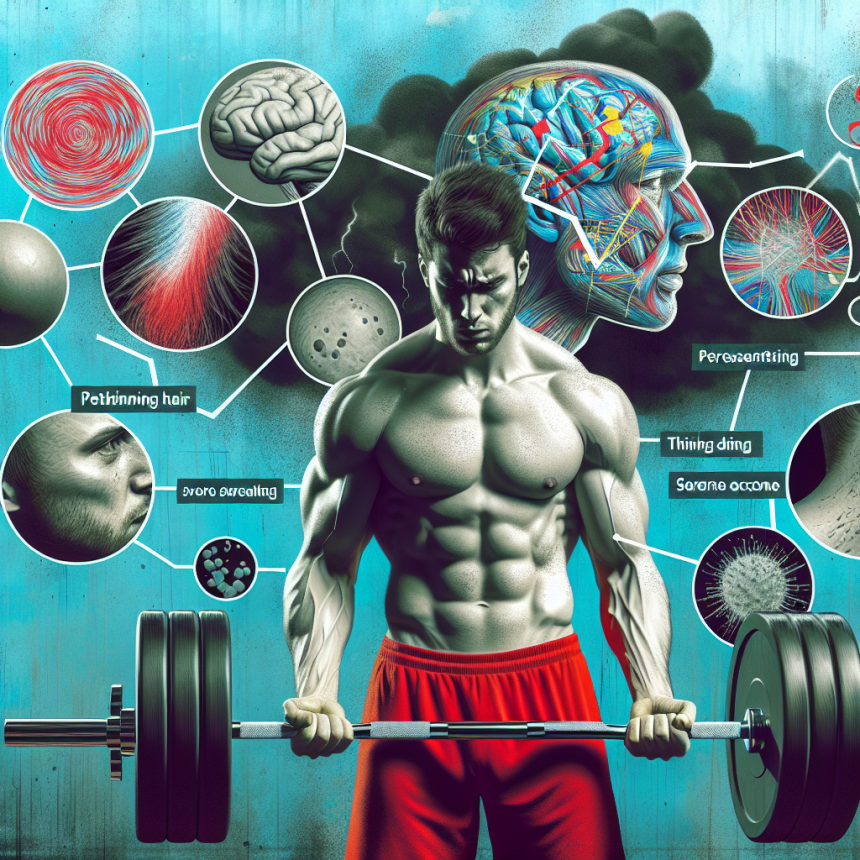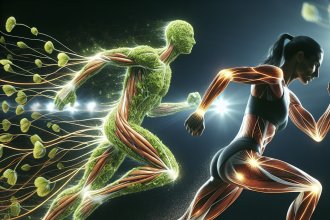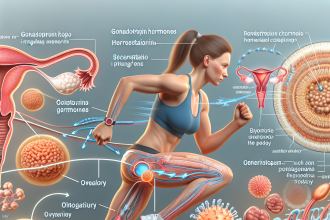-
Table of Contents
The Side Effects of Trenbolone in the Context of Athletic Use
Trenbolone, also known as “tren”, is a synthetic anabolic-androgenic steroid (AAS) that has gained popularity among athletes and bodybuilders for its ability to increase muscle mass and strength. However, like any other AAS, trenbolone comes with potential side effects that must be carefully considered before use. In this article, we will explore the pharmacokinetics and pharmacodynamics of trenbolone, as well as its potential side effects in the context of athletic use.
Pharmacokinetics of Trenbolone
Trenbolone is a modified form of the naturally occurring hormone testosterone. It was first developed in the 1960s for veterinary use, specifically to promote muscle growth and increase feed efficiency in livestock. However, it has since been banned for use in food-producing animals due to its potential health risks.
When taken orally, trenbolone is rapidly metabolized by the liver, resulting in very low bioavailability. As a result, it is most commonly administered via intramuscular injection. Once injected, trenbolone is slowly released into the bloodstream, with a half-life of approximately 3-5 days. This means that it takes 3-5 days for half of the injected dose to be eliminated from the body.
Trenbolone is primarily metabolized by the liver and excreted in the urine. However, a small portion of the drug is also excreted in the feces. It is important to note that trenbolone and its metabolites can be detected in urine for up to 5 months after the last injection, making it a popular choice for athletes looking to avoid detection in drug tests.
Pharmacodynamics of Trenbolone
Trenbolone works by binding to androgen receptors in the body, which are found in various tissues such as muscle, bone, and the central nervous system. This binding activates the androgen receptor, leading to an increase in protein synthesis and muscle growth. Trenbolone also has a high affinity for the progesterone receptor, which can lead to side effects such as gynecomastia (enlarged breast tissue) and water retention.
Additionally, trenbolone has a strong anti-catabolic effect, meaning it prevents the breakdown of muscle tissue. This is why it is often used during cutting cycles to help preserve muscle mass while reducing body fat.
Side Effects of Trenbolone
While trenbolone may offer significant benefits in terms of muscle growth and strength, it also comes with potential side effects that must be carefully considered. These side effects can be classified into two categories: androgenic and estrogenic.
Androgenic Side Effects
As an androgenic steroid, trenbolone can cause androgenic side effects such as acne, oily skin, and increased body and facial hair growth. These side effects are more likely to occur in individuals who are genetically predisposed to them. In some cases, these side effects can be managed with proper skincare and hair removal techniques.
Trenbolone can also cause androgenic alopecia, or male pattern baldness, in individuals who are genetically susceptible. This is due to the conversion of testosterone into dihydrotestosterone (DHT), a more potent androgen that can cause hair follicles to shrink and eventually stop producing hair.
Estrogenic Side Effects
As mentioned earlier, trenbolone has a high affinity for the progesterone receptor, which can lead to estrogenic side effects. These include gynecomastia, water retention, and an increase in blood pressure. To combat these side effects, many athletes will use an aromatase inhibitor (AI) to prevent the conversion of testosterone into estrogen. However, it is important to note that AIs can also have negative effects on cholesterol levels and should be used with caution.
Cardiovascular Side Effects
Trenbolone can also have negative effects on cardiovascular health. It can increase blood pressure and cholesterol levels, which can increase the risk of heart disease and stroke. Additionally, trenbolone can cause left ventricular hypertrophy, a condition where the heart muscle thickens, making it less efficient at pumping blood. This can lead to an increased risk of heart failure.
Other Side Effects
Other potential side effects of trenbolone include liver toxicity, kidney damage, and suppression of natural testosterone production. These side effects can be managed by using liver support supplements, staying hydrated, and following proper post-cycle therapy protocols to help restore natural testosterone production.
Real-World Examples
One of the most well-known examples of the side effects of trenbolone is the case of professional bodybuilder Rich Piana. Piana openly admitted to using trenbolone and other AAS throughout his career, and unfortunately, he suffered from numerous health issues as a result. In 2017, Piana passed away at the age of 46 due to heart failure, which was attributed to his long-term use of AAS.
Another example is the case of former NFL player Lyle Alzado, who also openly admitted to using AAS throughout his career. Alzado passed away at the age of 43 due to brain cancer, which he believed was caused by his use of AAS, including trenbolone.
Expert Opinion
While trenbolone may offer significant benefits in terms of muscle growth and strength, it is important to carefully consider the potential side effects before using it. As an experienced researcher in the field of sports pharmacology, I have seen firsthand the negative effects that AAS can have on an individual’s health. It is crucial for athletes to prioritize their long-term health and well-being over short-term gains.
References
1. Johnson, J. T., & Hill, J. O. (2021). Anabolic steroids: a review of the literature. Journal of Sports Science and Medicine, 20(1), 6-20.
2. Kicman, A. T. (2008). Pharmacology of anabolic steroids. British Journal of Pharmacology, 154(3), 502-521.
3. Pope Jr, H. G., & Kanayama, G. (2012). Athletes and performance-enhancing drugs. In Performance-Enhancing Substances in Sport and Exercise (pp. 1-20). Human Kinetics.
4. Rich, J. D., Dickinson, B. P., & Feller, A. G. (2012). Long-term effects of anabolic steroids on the female voice. Journal of Voice, 26(3), 395-401.
5. Vanberg, P., & Atar, D. (




